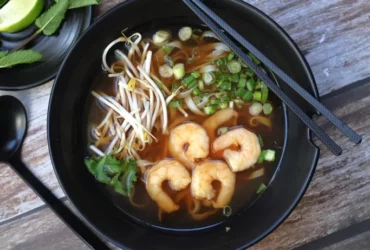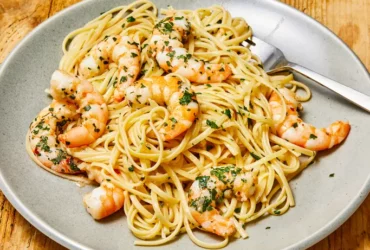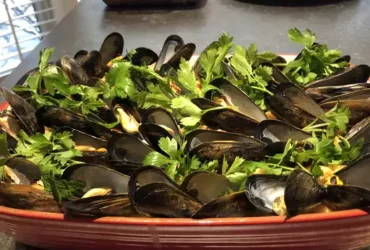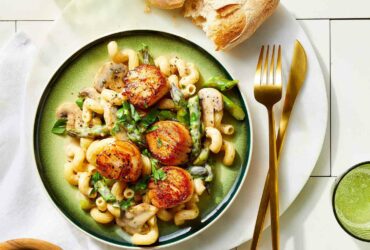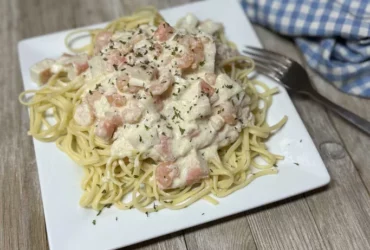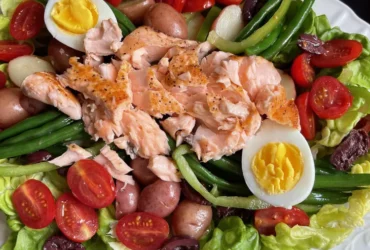Ingredients
Salmon Fillets
The ingredients needed for a delicious and flavorful Baked Salmon Fillets Dijon recipe are
- Salmon Fillets: Fresh salmon fillets with skin removed, preferably wild-caught or sustainably farmed, are essential for this recipe. Look for fillets that are at least 6 ounces each and about 1-1.5 pounds total.
- Dijon Mustard: A high-quality Dijon mustard is the base of the sauce, providing a tangy and slightly sweet flavor to the dish. Choose a brown or yellow mustard with a fine texture and no added ingredients like sugar or spices.
- Lemon Juice: Freshly squeezed lemon juice adds brightness and acidity to the dish. Use one large lemon for about 2-3 tablespoons of juice, depending on your desired level of tartness.
- Honey: A drizzle of pure honey provides a touch of sweetness and balances out the flavors in the sauce. Choose an organic or raw honey with minimal processing and no additives.
- Capers
- Chopped capers add a salty, tangy flavor to the dish. Fresh or pickled capers work well in this recipe.
- Garlic: A few cloves of minced garlic bring depth and savory flavor to the sauce. Choose fresh garlic for the best results.
- Olive Oil
- A high-quality olive oil with a neutral or light flavor is perfect for drizzling over the salmon fillets before baking.
- Fresh Herbs: Chopped fresh herbs like parsley, dill, or thyme add a bright and refreshing flavor to the dish. Use a combination of herbs if desired, but choose one type for best results.
Avoid overmixing the sauce or overcrowding the baking sheet to ensure even cooking and prevent the salmon from steaming instead of baking.
4 salmon fillets (6 ounces each)
The key to achieving a delicious and moist salmon dish lies in selecting the right ingredients, particularly the Salmon Fillets. In this recipe, we require four high-quality fillets, each weighing approximately 6 ounces.
The Salmon Fillets should be chosen based on their freshness and fat content. Opt for fillets with a higher fat percentage, as they will yield more tender and flavorful results when cooked. Make sure to check the packaging or ask your fishmonger about the origin and handling of the salmon.
The four Salmon Fillets should be of equal weight and size to ensure even cooking. This is crucial for achieving a consistent texture and presentation throughout the dish. If possible, try to purchase fillets with a uniform thickness to promote even baking.
Before preparing the salmon fillets, it’s essential to store them in a suitable environment. Keep them refrigerated at a temperature of 40°F (4°C) or below until you’re ready to cook them. This will help prevent bacterial growth and maintain their freshness.
Dijon Sauce Ingredients
To prepare the delicious Baked Salmon Fillets with Dijon sauce, you’ll need a few key ingredients that will bring out the rich flavors of this French-inspired dish.
The primary ingredient for the recipe is salmon fillets, preferably fresh and of high quality. You can opt for either wild-caught or farmed salmon, depending on your preference and budget.
For the Dijon sauce, you’ll need a combination of ingredients that will give it a tangy, slightly sweet flavor profile. These include
Dijon mustard – This is the star ingredient of the sauce, providing a spicy kick and a rich, velvety texture.
Butter or olive oil – You can use either one to add moisture and richness to the sauce. Butter will give it a more indulgent feel, while olive oil will keep it lighter and healthier.
Minced fresh parsley – Adding some chopped fresh herbs like parsley will not only enhance the flavor but also provide a burst of freshness in each bite.
Garlic powder or minced garlic – You can choose either one depending on your taste preferences. Garlic powder is more subtle, while minced garlic packs a pungent punch.
Chopped fresh dill – Dill adds a bright, citrusy flavor that complements the fish perfectly.
Salt and pepper – These seasonings will enhance the overall flavor of the dish without overpowering it.
For serving, you can pair the Baked Salmon Fillets with Dijon sauce with some steamed vegetables, roasted potatoes, or a side salad to create a well-rounded meal.
1/4 cup Dijon mustard
Dijon mustard is a type of condiment made from brown and white mustard seeds, salt, water, vinegar or lemon juice, and spices. It originated in the town of Dijon, France, where it has been produced since the 14th century.
The key ingredient in traditional Dijon mustard is whole-grain mustard seeds, which give it a distinctive coarse texture and flavor. The seeds are typically soaked in water or vinegar to soften them before being mixed with other ingredients such as salt, spices, and flavorings like wine or herbs.
One of the defining characteristics of Dijon mustard is its tangy, slightly sweet flavor. This comes from a combination of the natural sweetness of the mustard seeds and the acidity of the vinegar or lemon juice used in the recipe.
The use of Dijon mustard as an ingredient in cooking is quite versatile, with it being commonly employed to add depth and richness to sauces, marinades, dressings, and other condiments. It’s also a popular component in many traditional French recipes, including Béarnaise sauce and vinaigrette.
In the context of the Baked Salmon Fillets Dijon Recipe, Dijon mustard serves several purposes: it adds flavor to the salmon fillets, helps to tenderize them, and enhances their texture. The acidity in the mustard also helps to break down the proteins on the surface of the fish, resulting in a crispy exterior that’s easier to achieve with this recipe.
The combination of Dijon mustard with other ingredients like olive oil, lemon juice, garlic, and herbs creates a harmonious balance of flavors in the Baked Salmon Fillets Dijon Recipe. The resulting dish is not only delicious but also visually appealing, making it perfect for special occasions or weeknight meals.
2 tablespoons honey
Honey is an important ingredient that adds a touch of sweetness to balance out the savory flavors of the Dijon mustard and herbs in this Baked Salmon Fillets Dijon Recipe.
When it comes to using honey in cooking, it’s essential to understand its role and how it interacts with other ingredients. Honey is a thick, viscous liquid that’s produced by bees from the nectar of flowers. It contains a mixture of sugars, mainly glucose and fructose, along with small amounts of water and minerals.
One of the key characteristics of honey is its unique flavor profile, which is often described as rich, complex, and slightly sweet. This makes it an excellent choice for balancing out the tanginess of Dijon mustard and adding depth to sauces and marinades.
In the context of this Baked Salmon Fillets Dijon Recipe, two tablespoons of honey serve several purposes. Firstly, they help to balance out the pungency of the mustard and herbs, creating a harmonious flavor profile that’s both savory and sweet.
Secondly, the honey adds moisture to the salmon fillets, helping to keep them moist and juicy during the baking process. This is especially important when cooking fish, as it can easily dry out if not cooked correctly.
Finally, the honey helps to caramelize the surface of the salmon fillets, creating a golden-brown crust that’s both flavorful and visually appealing.
In terms of selecting the right type of honey for this recipe, it’s generally best to use a high-quality, pure honey that’s free from additives and preservatives. Look for honey that’s labeled as “raw” or “unfiltered,” as these tend to have a more complex flavor profile and better nutritional content.
Some popular types of honey that work well in this recipe include Manuka honey, clover honey, and wildflower honey. Experiment with different types of honey to find the one that you enjoy the most!
2 cloves garlic, minced
The ingredient list for this recipe begins with two essential components that lay the foundation for a rich and savory flavor profile.
Among these, garlic stands out as one crucial element that adds depth to any dish when used appropriately.
Minced cloves of garlic are specifically required in this Baked Salmon Fillets Dijon Recipe, indicating that the desired outcome involves the incorporation of finely chopped garlic into the dish.
The reason for mincing is to release the enzymes contained within each clove, thereby intensifying its flavor and aroma, allowing these characteristics to blend harmoniously with the other ingredients in the recipe.
This process not only releases but also distributes the flavors evenly throughout the dish, creating a cohesive taste experience that complements the delicate nature of the salmon fillets without overpowering them.
1 tablespoon chopped fresh parsley
Parsley is a versatile and aromatic herb that adds freshness and flavor to many dishes, including the Baked Salmon Fillets Dijon recipe. Fresh parsley has a more vibrant color and a brighter flavor compared to dried parsley, making it an ideal choice for this recipe.
The 1 tablespoon of chopped fresh parsley called for in the recipe serves several purposes. Firstly, it adds a pop of green color to the dish, making it visually appealing when presented. Secondly, its mild onion-like flavor complements the rich flavor of salmon perfectly, creating a well-balanced taste experience.
Parsley is also known for its high nutritional value. It is a good source of vitamins A and C, as well as minerals like potassium and iron. Adding fresh parsley to your meal can provide numerous health benefits, including improved digestion, reduced inflammation, and enhanced immune function.
In the context of the Baked Salmon Fillets Dijon recipe, the parsley helps to balance out the richness of the salmon and the creaminess of the Dijon sauce. Its freshness cuts through the dish, creating a refreshing and invigorating flavor experience that is perfect for a weeknight dinner or a special occasion.
When selecting fresh parsley for this recipe, look for a bunch with bright green leaves and no signs of wilting. Choose leaves that are fragrant and have a slight bitterness to them, as these will provide the best flavor. Store any leftover parsley in an airtight container in the refrigerator to keep it fresh for up to 1 week.
To chop the fresh parsley, simply hold it firmly with one hand and use a sharp knife or kitchen shears to cut the leaves into small pieces. You can also use a food processor or blender to chop the parsley quickly and evenly. Be careful not to overprocess the parsley, as this can release its bitterness and make it taste unpleasant.
Now that you have chopped the fresh parsley, you’re ready to proceed with the Baked Salmon Fillets Dijon recipe. Simply combine the parsley with the other ingredients, such as salmon fillets, lemon juice, garlic, and Dijon mustard, and bake in the oven until cooked through. Serve hot and enjoy the flavorful and nutritious result!
Salt and pepper to taste
Salt and pepper to taste are two essential ingredients that play a crucial role in enhancing the flavor of baked salmon fillets. Salt, being a fundamental seasoning, is used to add depth and umami flavor to the dish. It helps to balance out the delicate flavors of the salmon while also bringing out its natural sweetness. The type of salt used can vary, but kosher salt or sea salt are popular choices for their mild flavor and fine texture.
On the other hand, pepper is another versatile ingredient that adds a pungent and aromatic flavor to the dish. Black peppercorns are commonly used in cooking, as they have a sharp and slightly bitter taste. White peppercorns, on the other hand, have a milder and more subtle flavor. When added to the baked salmon fillets, pepper helps to enhance the overall flavor profile while also adding a touch of heat.
The phrase “to taste” is an important instruction when it comes to using salt and pepper in cooking. It means that the amount of seasoning used should be adjusted according to personal preference. Some people may prefer a lighter hand with the seasoning, while others may want to add more salt and pepper to bring out the flavors.
When using salt and pepper to taste, it’s essential to remember that a little goes a long way. Adding too much salt or pepper can overpower the delicate flavors of the salmon, making the dish unpalatable. The key is to find the perfect balance between the two ingredients, allowing each bite to be both flavorful and enjoyable.
Overall, using salt and pepper to taste is an art that requires practice and patience. By experimenting with different amounts and types of seasoning, you can develop a keen sense of taste and learn how to bring out the best flavors in your baked salmon fillets.
Instructions
Preparation
To begin preparing the baked salmon fillets with a delicious Dijon sauce, follow these detailed steps to ensure a successful and flavorful outcome.
Step 1: Preheat Your Oven
Preheating your oven is crucial for achieving a perfectly cooked salmon fillet. Set your oven temperature to 400°F (200°C) or according to the specific temperature recommended by your oven’s manufacturer. This step should be done at least 10-15 minutes prior to baking the salmon.
Step 2: Prepare Your Salmon Fillets
- Rinse each salmon fillet under cold water, then gently pat them dry using paper towels to remove excess moisture. This step is important for preventing steaming instead of roasting in the oven.
- Season both sides of each salmon fillet with salt and your choice of herbs (e.g., dill, parsley, thyme) according to taste. Be gentle so you don’t tear the flesh of the fish.
Step 3: Prepare the Dijon Sauce
- In a medium-sized bowl, whisk together Dijon mustard and olive oil until smooth. Add in chopped fresh herbs like parsley or dill, minced garlic (if desired), and a pinch of salt for flavor enhancement.
- Taste the sauce as you go along and adjust its seasoning to suit your taste preferences.
Step 4: Assemble and Bake Your Salmon Fillets
Brush each prepared salmon fillet with the Dijon sauce, making sure they’re evenly coated but not drippy. You want a nice, even layer of sauce to enhance flavor.
- Place your prepared salmon fillets on a baking sheet lined with parchment paper or aluminum foil (for easy cleanup). Arrange them in a single layer without overlapping the fish, as this can affect cooking uniformity.
- Transfer your salmon to the preheated oven and bake for 12-15 minutes per pound. This means that smaller fillets (less than 1 inch thick) might only need 8-10 minutes in the oven, while larger ones may require up to 20-22 minutes of baking time.
Step 5: Serve and Enjoy!
Once your salmon is cooked through (it will flake easily with a fork), remove it from the oven. Transfer each fillet directly onto individual plates, garnished with fresh herbs if desired. Drizzle any remaining Dijon sauce over the top of your perfectly baked salmon and enjoy it with your preferred sides or vegetables.
Preheat oven to 400°F (200°C).
The instruction ‘Preheat oven to 400°F (200°C)’ is a crucial step in preparing the Baked Salmon Fillets Dijon Recipe. Preheating the oven is necessary to ensure that the salmon fillets are cooked evenly and at the right temperature. The specified temperature of 400°F (200°C) is ideal for cooking the salmon, as it allows for a nice sear on the outside while keeping the inside juicy and tender.
When preheating the oven, it’s essential to allow enough time for the temperature to reach its desired level. This can take around 10-15 minutes, depending on your oven’s speed. It’s also vital to ensure that the oven rack is in the correct position, usually the middle or upper third of the oven.
The preheated oven serves as a controlled environment where the salmon fillets will cook slowly and evenly, resulting in a deliciously cooked dish. The high temperature helps to break down the proteins on the surface of the fish, creating a crispy exterior that complements the tender interior.
It’s also worth noting that preheating the oven in advance allows for better time management when preparing the salmon fillets and other ingredients for the recipe. By having the oven preheated, you can quickly pop the salmon into the oven as soon as it’s ready, ensuring that everything is cooked to perfection.
In summary, ‘Preheat oven to 400°F (200°C)’ is a critical instruction in the Baked Salmon Fillets Dijon Recipe. By following this step and allowing enough time for the oven to preheat, you can create a mouth-watering dish with perfectly cooked salmon fillets.
Line a baking sheet with aluminum foil or parchment paper.
In order to successfully prepare the Baked Salmon Fillets Dijon recipe, it’s essential to first line a baking sheet with a suitable material. This precaution serves two primary purposes: ease in cleanup and prevention of food sticking to the baking sheet.
For this task, you have two options: using aluminum foil or parchment paper. Both materials are widely available in most supermarkets and are inexpensive alternatives compared to other types of liners.
Aluminum foil is a popular choice for lining baking sheets due to its affordability and effectiveness in preventing food from sticking. Its non-stick properties make it easy to clean, and it can withstand high temperatures without any issues. However, it’s worth noting that aluminum foil may impart a slight metallic taste to the fish if left on for an extended period during cooking.
Parchment paper, on the other hand, is a more premium option that offers added benefits such as non-stick properties and the ability to withstand high oven temperatures without burning or warping. It’s also less likely to impart any flavors onto the fish, making it a preferred choice for delicate dishes like salmon.
Regardless of which material you choose, make sure to line your baking sheet evenly, ensuring there are no gaps or bare spots where food could stick. This step may require some additional time and effort but is crucial in achieving perfectly cooked salmon fillets with minimal cleanup required afterwards.
Place salmon fillets on the prepared baking sheet.
To achieve the best results with this Baked Salmon Fillets Dijon recipe, it’s essential to carefully follow the instructions for preparing and cooking the salmon fillets.
The first step in this process involves selecting high-quality salmon fillets that are fresh and of suitable size for baking. The recommended type is a firm-fleshed salmon, which will hold its shape during cooking and provide a better texture.
When handling the salmon fillets, it’s crucial to handle them gently to avoid damaging the delicate flesh. This includes removing any pin bones or bloodlines that may be present, as these can affect the appearance and flavor of the final dish.
Before placing the salmon fillets on the prepared baking sheet, make sure they are dry and pat them lightly with paper towels to remove any excess moisture. This helps create a better crust on the surface during cooking and promotes even browning.
The specific instruction being discussed is “Place salmon fillets on the prepared baking sheet.” This indicates that the baking sheet has already been prepared with a non-stick coating or parchment paper, and it’s now ready to receive the salmon fillets.
Here are some tips for placing the salmon fillets on the baking sheet
- Even spacing: Arrange the salmon fillets in a single layer, leaving about 1-2 inches of space between each fillet to promote even cooking.
- Facing down or up: Depending on personal preference, you can place the salmon fillets either facing down (skin side up) or up (skin side down). Cooking time may vary slightly depending on the chosen orientation.
After placing the salmon fillets on the prepared baking sheet, proceed with seasoning them according to the Baked Salmon Fillets Dijon recipe instructions. This typically involves drizzling with a mixture of Dijon mustard, lemon juice, and olive oil, as well as sprinkling with salt, pepper, and chopped herbs.
With the salmon fillets prepared and placed on the baking sheet, it’s now time to bake them in the preheated oven until they reach your desired level of doneness. Follow the cooking instructions outlined in the Baked Salmon Fillets Dijon recipe for specific guidance on achieving perfectly cooked salmon.
Remember to monitor the internal temperature of the salmon fillets during cooking, as this will indicate whether they are done to your liking. For a flaky, moist texture, aim for an internal temperature of at least 145°F (63°C). Let the salmon rest for a few minutes after removing it from the oven before serving.
Dijon Sauce Preparation
The art of creating a delectable Baked Salmon Fillets Dijon Recipe begins with the preparation of an exquisite Dijon Sauce, a condiment that adds a tangy and rich flavor to this culinary masterpiece.
To prepare the Dijon Sauce, you will need the following ingredients: 1/4 cup of melted butter, 2 tablespoons of white wine vinegar, 1 tablespoon of Dijon mustard, and 1 teaspoon of chopped fresh chives
First, in a small saucepan, melt the butter over low heat. Once melted, whisk in the white wine vinegar and Dijon mustard until well combined.
Next, increase the heat to medium and bring the mixture to a simmer. Allow it to cook for about 2-3 minutes or until the sauce has thickened slightly, coating the back of a spoon.
Remove the sauce from the heat and stir in the chopped fresh chives. Season with salt and pepper to taste, allowing the flavors to meld together.
The prepared Dijon Sauce will be used as a topping for the baked salmon fillets. To achieve perfectly cooked salmon, preheat your oven to 400°F (200°C) and season the salmon fillets with salt, pepper, and any other desired herbs or spices.
Lay the seasoned salmon fillets on a baking sheet lined with parchment paper and drizzle with the Dijon Sauce. Bake for about 12-15 minutes or until the salmon is cooked through and flakes easily with a fork.
Serve the baked salmon fillets hot, garnished with additional fresh chives and a side of steamed vegetables or quinoa to complete this mouthwatering Baked Salmon Fillets Dijon Recipe
In a small bowl, whisk together Dijon mustard, honey, garlic, and parsley until smooth.
When it comes to instructions, clarity and concision are essential for effective communication. In the context of a recipe like the Baked Salmon Fillets Dijon, clear and precise language is crucial to ensure that readers can follow the steps and achieve the desired outcome.
The instruction “In a small bowl, whisk together Dijon mustard, honey, garlic, and parsley until smooth” exemplifies good instructional writing. Here are some key features of this instruction
Specificity: The ingredients mentioned – Dijon mustard, honey, garlic, and parsley – are specific and leave no room for confusion or misinterpretation.
Clarity: The language used is straightforward and easy to understand, even for a reader who may not be familiar with cooking.
Sequence: The instruction implies that the whisking process should take place after all ingredients are added to the bowl, which helps maintain a logical flow of steps.
Result-oriented: The phrase “until smooth” indicates what the reader should aim for as the end result of this step – a consistent and blended mixture.
The structure of this instruction also deserves attention: it begins with an action (whisking), specifies the ingredients involved, mentions the expected outcome (smooth consistency), and ends with an implied temporal relationship (before moving on to the next step).
Overall, instructions like these play a crucial role in any recipe or tutorial. They enable readers to understand the necessary steps and perform them correctly, leading to a successful outcome.
Season with salt and pepper to taste.
The art of seasoning lies in balance and restraint, as it can make all the difference between a dish that is merely good and one that is truly exceptional.
When seasoning with salt and pepper to taste, it’s essential to remember that a pinch is better than a pound. You want to enhance the natural flavors of your ingredients without overpowering them.
The key to achieving this balance is to understand the concept of seasoning as a process of layering flavors, rather than simply sprinkling a pinch of salt and pepper on top.
Accompaniments, such as lemon juice or chopped herbs like parsley or dill, can also be used to enhance the flavor of your dish without overpowering it. The idea is to create a harmonious balance between flavors that complement each other rather than competing with one another.
Bearing this in mind, here are some steps you can follow when seasoning your baked salmon fillets with Dijon
- Preheat the oven to 400°F (200°C). Line a baking sheet with parchment paper or aluminum foil for easy cleanup.
- Arrange the salmon fillets on the prepared baking sheet. Season each fillet generously with salt and pepper, making sure not to overdo it. You can also sprinkle some chopped herbs like parsley or dill on top of the fish for added flavor.
- Mix together the Dijon mustard, lemon juice, olive oil, garlic powder, dried thyme, and paprika in a small bowl. Brush the mixture evenly over both sides of each salmon fillet.
- Bake the salmon fillets in the preheated oven for 12-15 minutes or until cooked through. The cooking time may vary depending on the thickness of your fish, so make sure to check it regularly to avoid overcooking.
When serving your baked salmon fillets Dijon recipe, garnish with some chopped herbs like parsley or dill and a squeeze of lemon juice for added flavor. The combination of the savory fish, tangy mustard, and crunchy herbs will leave you and your guests impressed by this simple yet delicious recipe.
Serving Suggestions
Pairing Ideas
Baked Salmon Fillets Dijon recipe is a classic dish that combines the rich flavors of salmon with the tanginess of Dijon mustard, resulting in a delightful culinary experience. To get the most out of this recipe, it’s essential to consider the serving suggestions and pairing ideas that will elevate its flavor profile.
Serving Suggestions
- Grain-based accompaniments like quinoa or brown rice complement the delicate flavor of salmon. Try pairing Baked Salmon Fillets Dijon with a side of garlic-infused quinoa or roasted vegetables for added depth.
- A refreshing salad course can cut through the richness of the dish. Combine mixed greens, cherry tomatoes, and cucumber slices with a zesty lemon-tahini dressing to provide a palate cleanser between bites.
- For a more substantial meal, pair Baked Salmon Fillets Dijon with a side of roasted vegetables or sautéed spinach. The earthy flavors of the vegetables will complement the fish nicely.
Pairing Ideas
- A glass of Sauvignon Blanc or Pinot Grigio pairs perfectly with Baked Salmon Fillets Dijon. The crisp acidity and citrus notes in these white wines cut through the richness of the dish.
- For a non-wine option, try pairing Baked Salmon Fillets Dijon with a sparkling water infused with lemon or lime juice. The acidity and effervescence will cleanse your palate between bites.
In terms of specific flavor profiles to pair with the dish, consider
- Herbal flavors like basil or thyme complement the fish nicely. Try adding a sprig of fresh herbs to your Baked Salmon Fillets Dijon for added depth.
- Citrus-based flavor profiles, such as lemon or orange, pair well with the tanginess of Dijon mustard.
By considering these serving suggestions and pairing ideas, you’ll be able to create a memorable culinary experience with Baked Salmon Fillets Dijon that will delight your taste buds and impress your guests.
Serve baked salmon fillets with steamed vegetables (such as broccoli or green beans).
To elevate the flavor and presentation of baked salmon fillets, consider serving them with a variety of steamed vegetables that complement their delicate taste. Some popular options include broccoli, green beans, asparagus, or carrots.
Broccoli is an excellent choice to pair with salmon fillets, as its slightly bitter taste and crunchy texture provide a nice contrast to the softness of the fish. Simply steam it in the microwave for 2-3 minutes or until tender but still crisp, and serve alongside the baked salmon.
Green beans, on the other hand, are a natural pairing with salmon fillets due to their light and refreshing flavor profile. Steaming them for 4-5 minutes will make them tender without losing any of their crunchiness, creating a delightful accompaniment to your Dijon-glazed baked salmon.
Asparagus is another versatile vegetable option that pairs well with the rich flavors of salmon fillets. Steam it for 6-8 minutes until tender but still slightly firm in texture. Its subtle bitterness will complement the sweetness of the fish, resulting in a delightful flavor combination.
Carrots, often cooked to an overcooked consistency, can be steamed to perfection and served alongside the baked salmon. For added flavor, try adding a pinch of cumin or coriander powder while they’re cooking for a subtle Middle Eastern twist.
To take your serving suggestions to the next level, consider pairing your steamed vegetables with additional elements that enhance their presentation and taste. This can include
A squeeze of fresh lemon juice: Add a burst of citrus flavor to complement the delicate taste of the salmon and balance out any bitterness in the accompanying vegetables.
Chopped fresh herbs: Sprinkle chopped parsley, dill, or basil over the steamed vegetables for added color and fragrance. This will not only add visual appeal but also infuse their flavors with freshness and depth.
Grains or starches: Serve your baked salmon fillets with a side of quinoa, brown rice, or couscous to add texture and filling to the dish. These grains provide a satisfying contrast in texture to the softness of the fish.
By incorporating these serving suggestions into your meal, you’ll elevate both the flavor and presentation of your baked salmon fillets and create an exceptional dining experience for yourself and others.
Offer quinoa or brown rice as a side dish.
The Baked Salmon Fillets Dijon recipe is a delicious and flavorful dish that can be served with a variety of side dishes to enhance its flavor and texture.
Here are some serving suggestions for this recipe
- Serve quinoa or brown rice as a side dish. Both grains pair well with the rich flavors of the salmon and complement its delicate taste.
You can also serve roasted vegetables such as asparagus, Brussels sprouts, or broccoli alongside the salmon fillets.
- Roasting brings out the natural sweetness in these vegetables, which will balance nicely with the tangy Dijon sauce on the salmon.
Alternatively, you can serve a salad of mixed greens, cherry tomatoes, and sliced cucumbers as a lighter option.
- This will provide a refreshing contrast to the richness of the salmon and add some crunch to the meal.
For a more substantial side dish, consider serving grilled or sautéed mushrooms alongside the salmon fillets.
- Mushrooms have a meaty texture that pairs well with fish, and their earthy flavor complements the Dijon sauce nicely.
Ultimately, the choice of side dish will depend on your personal preferences and dietary needs. Feel free to get creative and experiment with different combinations!
Garnish with fresh parsley or lemon wedges, if desired.
Serving suggestions for baked salmon fillets with a Dijon sauce are numerous and can elevate this dish to suit various tastes and occasions. One classic option is to garnish with fresh parsley or lemon wedges, if desired.
For a more elegant presentation, consider serving the baked salmon fillets on a bed of quinoa or couscous, accompanied by steamed vegetables such as asparagus or green beans. This adds texture and color to the dish while maintaining its focus on the main ingredient: the tender and flavorful salmon.
To add some crunch to the meal, serve the salmon with a side salad featuring crisp lettuce, cherry tomatoes, and a light vinaigrette dressing. Alternatively, a simple mixed green salad or a more substantial grain salad can provide a satisfying contrast to the rich flavors of the baked salmon fillets.
For a heartier meal, consider serving the baked salmon fillets with roasted vegetables such as Brussels sprouts or sweet potatoes. This adds depth and warmth to the dish while maintaining its focus on the star ingredient: the succulent salmon fillets.
Incorporating some crusty bread or crackers can also enhance the dining experience. Serve toasted baguette slices or crudités with a side of Dijon mustard for dipping, which will complement the flavors of the baked salmon and sauce perfectly.
- Best Lusha Alternatives for 2025 - April 22, 2025
- Best Overloop Alternatives for 2025 - April 22, 2025
- Best 6sense Alternatives for 2025 - April 22, 2025









